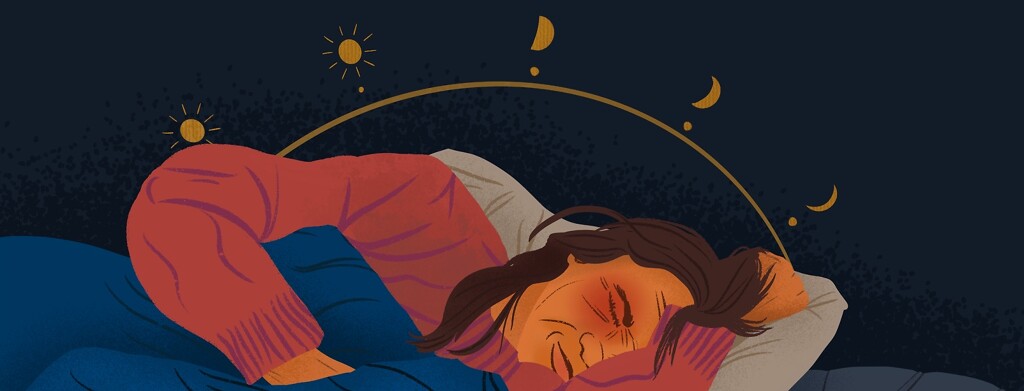Are Chronic Dry Eye and Migraine Linked?
Chronic dry eye (CDE) is caused by a lack of tears. Those with CDE either do not make enough tears or have unhealthy tears that cannot wet the eye. There may be a link between dry eye and migraine. The 2 conditions have a lot in common. They may also share similar causes.1,2
What is migraine?
Migraine is a painful condition that causes severe head pain and other symptoms like nausea, vomiting, and sensitivity to sound and light. Migraines can last hours or days.2,3
Aura can also occur with migraines. Aura can make you see spots or flashes of light or cause brief vision loss. Changes in the nervous system cause aura.2,3
Is there a link with dry eye?
Many small studies show that those who have migraines are more likely to have dry eye symptoms. One study showed that of those with dry eye, 14.4 percent also have migraines. This is compared to 8.2 percent without migraines.3-5
Another study found 19.6 percent of those with migraines have CDE compared to 12.7 percent without migraines. The link is strongest for women 65 years and older.3-5
Dry eye, aura, and length of time with migraines
A study of 58 people with migraines found that aura raises the risk of dry eye by 5 times. Also, those with CDE are more likely to have had migraines for longer. For those with dry eye, the average lifetime duration for migraines is 10 years. For those without dry eye, it is 6 years.2
Shared traits
Dry eye and migraines may seem unrelated, but they have shared traits. These include:2-4,6-9
- Commonness – CDE and migraine are both quite common. One study shows 7 to 33 percent of people have dry eye, and 14 percent have migraines. Some studies show up to 50 percent of people have CDE symptoms, and up to 25 percent have migraines.
- Symptoms – Eye pain and sensitivity to light are symptoms in both conditions. Both conditions can also present differently among people. This makes them hard to diagnose.
- Gender as a risk factor – Women are twice as likely to have dry eye and 3 times more likely to have migraines compared to men.
- Hormonal effects – Changes in hormones have been found to trigger both CDE symptoms and migraines.
- Conditions occurring at the same time – Depression, anxiety, and changes in sleep are common conditions seen in people with CDE and migraines.
- Poor quality of life – Research shows both conditions lower quality of life.
Underlying cause
More research needs to be done to answer whether dry eye and migraines share an underlying cause. However, research has uncovered some possible shared connections.
Inflammation
A brain chemical called calcitonin gene-related peptide (CGRP) is involved in inflammation. CGRP may cause CDE and migraines by affecting normal nerve function. CGRP also plays a role in sensitivity to light.3
Nerve changes and sensitization
The trigeminal nerve may be involved in both conditions. The trigeminal nerve is a cranial nerve that helps make tears and provides sensation to the eyes, nose, and mouth. If it is active at the wrong time, it changes how sensitive other nerves are. Oversensitive nerves are too quick to respond to light, sound, and touch. This sensitivity may cause CDE and/or migraines.3,4
Two small studies, one with 10 people and one with 34 people, showed that corneal and central nerves looked and behaved differently in those with migraine or CDE. For those with CDE, corneal nerves were only affected in those with tear problems. Meibomian gland dysfunction did not show the same changes. It is possible that not all types of dry eye are linked to migraine.3
Can migraine treatments be used for dry eye symptoms?
Some migraine treatments may work for CDE. Migraines are treated with drugs that affect nerves. These include serotonin, norepinephrine reuptake inhibitors, anesthetics, and tricyclic antidepressants. Some research shows that these drugs may help with dry eye.3
Botox injections block CGRP and are used for migraines. A study of 117 people with migraines and CDE said Botox lessened dry eye symptoms. Transcutaneous electrical nerve stimulation (TENS) is a migraine treatment that activates nerves. TENS lessened dry eye symptoms in a study of 10 people.3
Limitations of these studies
Most of these studies do not include enough people. They use questionnaires to assess symptoms, which can cause bias. Also, these studies do not uncover what it is about CDE that may be linked to migraines. More well-designed studies with a larger amount of people are needed to understand any potential link between CDE and migraine.
A link between 2 conditions does not mean 1 causes the other. Rather, they share some traits. Not enough is known to say that migraines cause chronic dry eye, or vice versa.
Community Poll
Does chronic dry eye prevent you from enjoying time outdoors?

Join the conversation